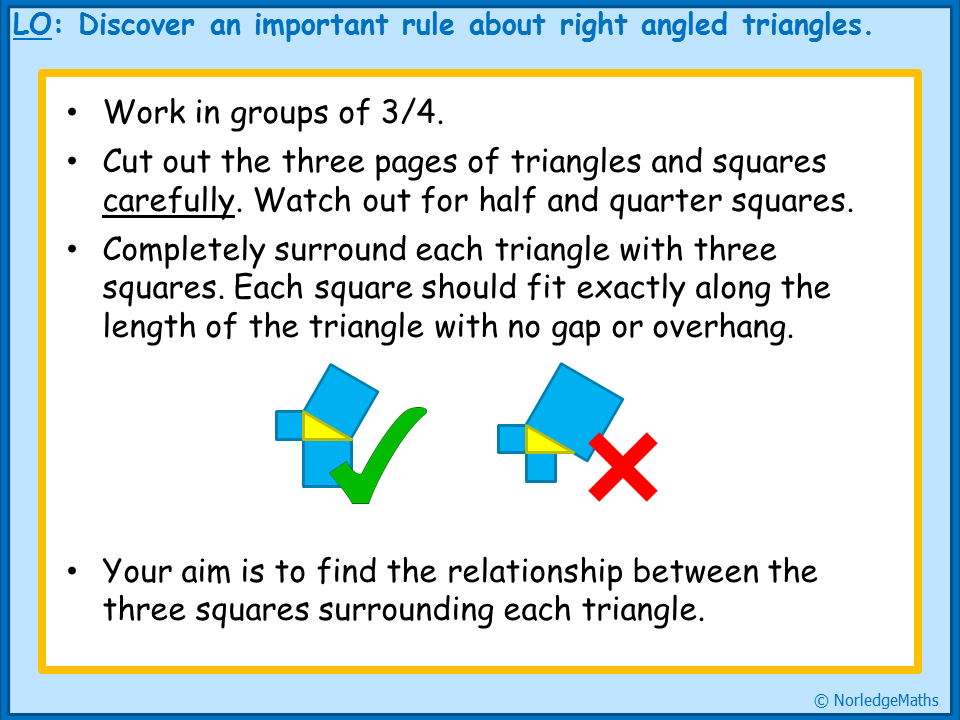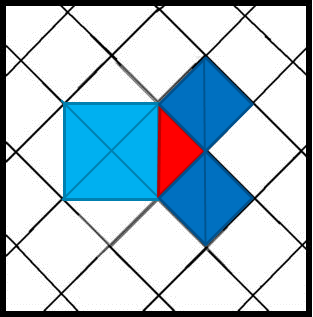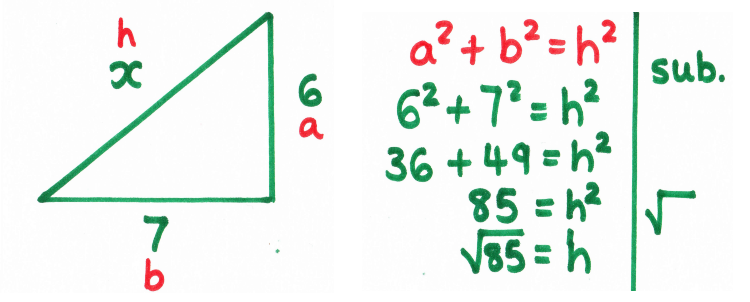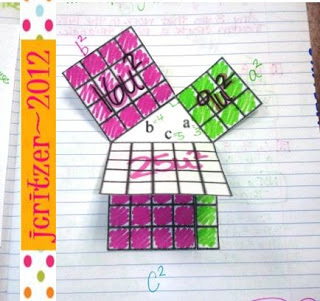| 1. Discover the theorem My favourite way to introduce Pythagoras' theorem happens to also be the first lesson I ever taught - before I even got a GTP place and to a group of (then) very scary looking Year 11 boys. I think it has a special place in my heart for that reason, but it seems to work well, so I drag it out every year. It takes a bit of preparation, but is well worth doing. I'll add that this idea isn't my own, and was shamelessly pinched from a fantastic teacher I had the joy of observing and working with for two weeks on the Students Associate scheme when it was still running. You need a selection of pre-drawn triangles and squares on centimetre paper. Include the typical 3, 4, 5 and 6, 8, 10 triangles, but some simple ones with half-units also work quite well. You also need a large piece of paper (two sheets of A3 stuck together does the trick) and glue for each pair or group. Alternatively, follow the links to download my version. |
Once they've done this, I ask them to work out the area of each square (they can do this by counting or multiplying), then look for a link, annotating on their posters as they go. Towards the end, I pull the class back together and we discuss what we've found out. Depending on where I've judged their understanding, I'll go straight to the algebraic representation or leave this for the next lesson.
| I also like to tell the pupils a story my dad told me when he taught me Pythagoras' theorem; I vividly remember sitting in our dining room at home, looking at the square tiles on the floor, and hearing about Pythagoras pacing around the temple in Samos looking at patterns on the floor, and this was how he came up with his theorem. Obviously, this story has absolutely no historical basis whatsoever, but it works mathematically, so it'll do for me! |





 RSS Feed
RSS Feed
